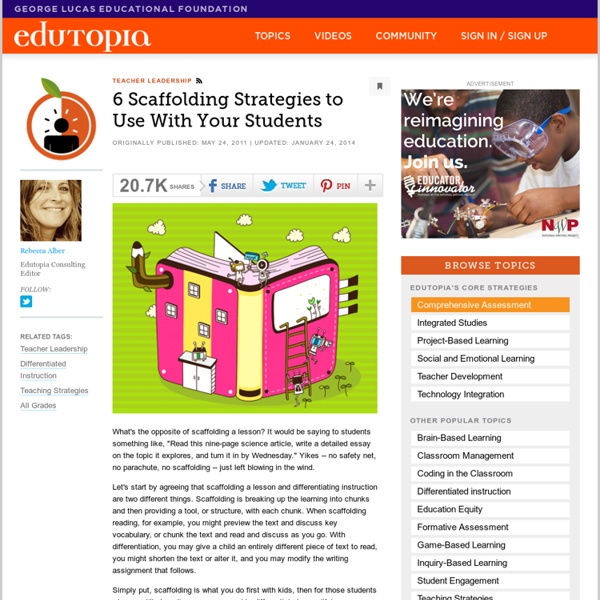6 Scaffolding Strategies to Use With Your Students

Student Engagement: Resource Roundup
Facebook Edutopia on Facebook Twitter Edutopia on Twitter Google+ Pinterest Edutopia on Pinterest WHAT WORKS IN EDUCATION The George Lucas Educational Foundation Tips and Strategies for Keeping Students Engaged Igniting Student Engagement: A Roadmap for Learning, by John McCarthy (2015) McCarthy discusses key strategies to ensure student engagement including being authentic, introducing units with meaningful launch events, and letting students know what outcomes to expect. Back to Top Engagement Through Projects Integrated Learning: One Project, Several Disciplines, by Edutopia Staff (2015) For any project within a vocational major, High Tech High encourages teachers and students to include relevant content from other subject areas to enhance real-world connections. Engagement Through Technology Engagement Through Social and Emotional Learning Getting (and Keeping) Students Engaged Create experiences so students invest in their learning.
Stop The False Generalizations About Personalized Learning
In March, Tom Loveless, a fellow at the Brookings Institution, took an outdated swipe at the logic behind moving toward a student-centered learning system. He in essence suggested that because the curriculum wars have been decided more or less empirically, that people bent on disrupting the classroom and the factory-model education system were doing so under faulty assumptions about how students learn. In his piece, he attacked the logic of teaching around multiple intelligences and pointed to some of the research that shows that tailoring learning opportunities to common assumptions around visual, auditory, and other such supposed learning styles are not good ways of teaching different students. Today’s factory-model education system, which was built to standardize the way we teach, falls short in educating successfully each child for the simple reason that just because two children are the same age, it does not mean they learn at the same pace or should follow the same pathway.
Related:
Related:



